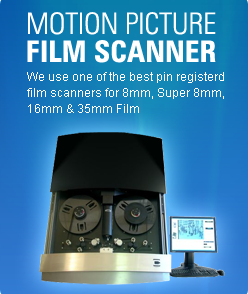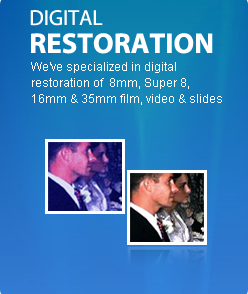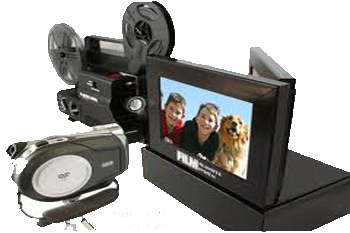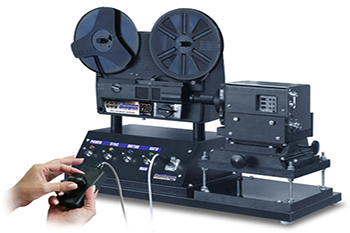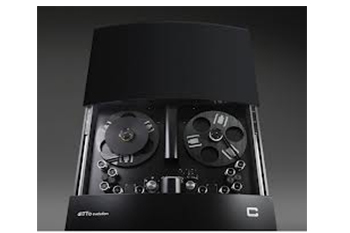
Film Conversion Equipment
Film Scanning and Film Transfer Equipment Types
The type of film scanning machine used for your 8mm, Super 8 or 16mm film conversion will have as much of an impact on the quality you receive as the resolution of the scan itself will. For example, if you wanted to digitize a photograph and tried doing it two different ways. You first put the photograph down on a table and took a picture of it using your smart phone or camera. Then you took the picture and scanned it using a flatbed scanner. If you compare the two side by side on your computer it will become really obvious that the flatbed scanner produced a digital image as good as the photograph. However, the picture you took with your phone or camera does not look close to the quality of the original photograph.
The same goes for scanning your 8mm, Super 8 or 16mm film. The real-time and frame by frame machines below are using a camcorder to take a picture of your film. The motion picture film scanner and Datacine machine are scanning the film. The results will be significantly different.
Film Conversion Equipment |
|
Real Time
|
|
Frame by Frame
|
|
Professional Film Scanners
|
|
Equally important as resolution is the type of film transfer. There are a few basic types of film transfer processes. More than 80% of the companies out there today use a real-time transfer. Any type of real-time film transfer will result in video that is 40-50% worse than the film’s current condition.
So, at this point you’ve learned that film transfers can capture at standard definition (480 lines), high definition (1080 lines) or 2K (1556 lines). You’ve also learned about the 3 different types of film transfers being used today. In order from least to best quality we have:
Bowling Green Fun Facts: In 1906, The Western Kentucky State Normal School was founded in central Bowling Green and this institution went on to become Western Kentucky University, the third largest public university in the state. Today, the University is one of the city's largest employers, along with other major industries calling Bowling Green home, including the General Motors Corvette Plant, Holley Performance Products, and Pan-Oston. The Kentucky city of Bowling Green lies in the southern part of the state, about 110 miles south of Louisville and about 60 miles north of Nashville, Tennessee. The city sits alongside the Barren River, and is the county seat of Warren County.
Kentucky Fun Facts: Although it sided with the Confederacy during the Civil War, the population was deeply divided, and many Kentucky residents fought for the North. Known primarily as an agricultural area into the 20th century, Kentucky is also a major U.S. coal producer andsite of the U.S.military bases Fort Knox and Fort Campbell. It is also known as the home of the legendary Kentucky Derby horse race and bluegrass music, pioneered by Kentucky native Bill Monroe.
